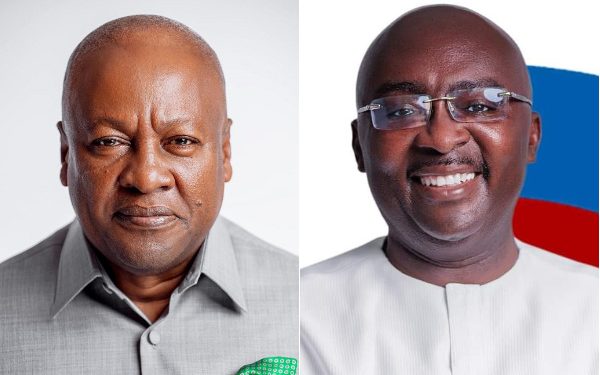The 2024 Ghanaian presidential elections have revealed a shifting political landscape as the governing New Patriotic Party (NPP) and opposition National Democratic Congress (NDC) engaged in a fierce contest. The results show significant regional gains and losses for both parties compared to the 2020 elections. While the NPP faced major declines across its traditional strongholds and battleground regions, the NDC saw modest overall gains with critical improvements in specific regions.
Historical Context of Ghana’s Electoral Trends
Ghana’s Fourth Republic, inaugurated in 1992, has seen the NPP and NDC dominate as the two major political parties. The NPP has historically performed well in the Ashanti and Eastern Regions, often described as its “political backbone,” while the NDC holds firm in the Volta Region and parts of the Northern belt. Swing regions such as Greater Accra, Central, and Western often decide the outcome of elections.
In the 2020 elections, the NPP’s Nana Akufo-Addo secured victory with a strong showing in urban and traditional stronghold regions. However, the 2024 election under Mahamudu Bawumia’s leadership saw a sharp decline for the NPP, while the NDC, led by former President John Dramani Mahama, consolidated its base and improved in critical areas.
NPP’s Declines: A Major Shift in Strongholds
The NPP experienced significant setbacks across regions, particularly in its core areas and swing regions:
- Greater Accra Region
The NPP’s most significant loss came in Greater Accra, where its votes dropped by a staggering 46%. Nana Akufo-Addo’s 1,253,179 votes in 2020 fell sharply to 681,535 for Mahamudu Bawumia. Greater Accra, known for its diverse and urbanised electorate, has historically been a swing region but increasingly leaned toward the NDC, a trend that intensified in 2024.
- Central Region
A traditional swing region, Central delivered a 38% decline for the NPP. Votes plummeted from 613,804 in 2020 to 382,749. This outcome indicates a loss of confidence in the ruling party, as the NDC capitalized on voter discontent and historical ties to the region.
Ashanti Region
Even in its stronghold, the NPP saw a 24% decline in the Ashanti Region, with votes falling from 1,795,824 in 2020 to 1,366,800. This decline signals voter apathy and potential dissatisfaction within the party’s core base. While the NPP still dominated the region, the significant reduction raises concerns for its future electoral strategies.
Other notable declines for the NPP include the Volta Region (-44%), Western Region (-37%), and Eastern Region (-34%), highlighting a nationwide erosion of support.
NDC’s Gains: A Steady Comeback
The NDC capitalized on the NPP’s losses, particularly in regions where voter turnout and support increased:
- Northern Region
The NDC recorded its most significant gain in the Northern Region, where Mahama’s votes increased by 11%, rising from 476,550 in 2020 to 529,456 in 2024. This solidifies the Northern Region as a critical stronghold for the NDC, aided by Mahama’s roots and the party’s targeted campaigns.
- Ahafo Region
In the smaller but competitive Ahafo Region, the NDC increased its votes by 12%, moving from 116,485 to 130,106. This growth highlights the NDC’s ability to make gains in regions where the NPP previously held a significant advantage.
- Bono Region
The NDC posted a notable 16% increase in the Bono Region, rising from 203,392 votes in 2020 to 235,681 in 2024. The NDC’s success here underscores its strategy of regaining support in swing regions.
Additional gains were observed in Western North (+3%) and Upper West (+2%), signaling modest improvements across key regions.
NDC’s Setback: Savannah Region
Despite its overall gains, the NDC suffered a notable setback in the Savannah Region, where Mahama’s votes declined by 7%, from 144,244 to 134,563. As Mahama’s home region, this result may reflect dissatisfaction with the NDC’s local performance or campaign efforts.
National Overview: A Tale of Contrasting Fortunes
At the national level, the NPP’s total vote count dropped by 30.8%, falling from 6,730,587 in 2020 to 4,657,304 in 2024. The NDC, on the other hand, achieved a modest national increase of 1.9%, rising from 6,213,182 votes to 6,328,397.
The overall trends indicate significant voter dissatisfaction with the NPP, particularly in urban areas and swing regions. While the NDC made gains, its growth was concentrated and modest, highlighting the need for both parties to reassess their strategies ahead of future elections.
Key Takeaways
- NPP’s Losses: Greater Accra (-46%), Volta (-44%), and Central (-38%) Regions mark the party’s most severe setbacks.
- NDC’s Gains: The party’s strongest improvements came in the Northern (+11%), Ahafo (+12%), and Bono (+16%) Regions.
- Savannah Decline: The NDC’s 7% decline in Savannah stands out as a key challenge despite its overall gains.
Conclusion
The 2024 elections have reshaped Ghana’s regional political map, with the NPP facing unprecedented declines in key regions and the NDC making measured gains. As both parties reflect on the outcomes, it is clear that voter priorities, urban shifts, and regional dynamics will continue to influence Ghana’s political future. The results underscore a growing need for both parties to engage deeply with voters in both traditional strongholds and swing regions to remain competitive in the years ahead.


